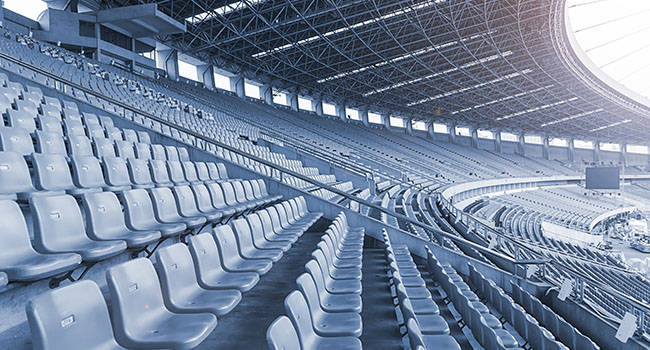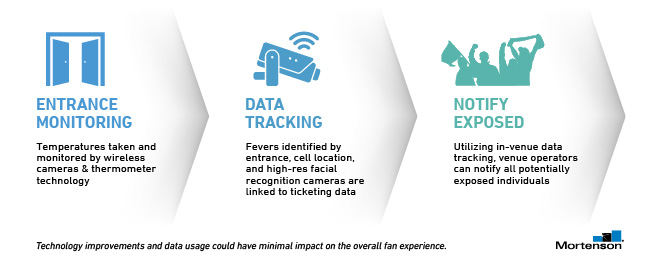
Long before employees were ordered to work from home, telecommunications and technology infrastructure were rapidly changing in our ever-connected world.
For many of us, digital connectivity has taken a hold on our everyday habits. With social distancing at the forefront of reducing the spread of COVID-19, virtual connections and emerging technologies are gaining popularity at an accelerating pace. Telecommunications networks have seen rising demand as consumers increase data usage. Global internet backbone provider Telia Carrier reports that it saw overall traffic volume rise by around 50% during the month of March as a result of pandemic-driven shifts in network usage. Surprisingly, voice usage, which had been steadily declining for many years, is also on the rise, up 25% during the pandemic.
Overall, demand for wireless network usage has increased by approximately 20% as the world battles COVID-19. This demand will likely not change anytime soon. We will continue to use more data and network capacity to communicate than we ever have in the past.
Public venues and fan confidence
Large public venues were among the first spaces to close in the wake of COVID-19. Shortly after, sports leagues began making the difficult, yet necessary decisions that resulted in most halting their seasons altogether. Like many impacted businesses, sports venues across the country saw their revenue and business models disappear overnight.
Fans are still eager to cheer on their team and hear their favorite band perform. To fulfill this latent and pent up, demand, owners and operators of venues play a role in finding ways to help those fans feel safe to congregate in large groups again.
Just as airports made travelers feel safe after the terrorist attacks of 9/11, public safety will need to be top of mind for large public venue owners. In a recent survey conducted by Seton Hall University, more than 70% of fans polled said they would not attend if sporting events resumed without a vaccine for COVID-19. While improvement in infrastructure may not replace a vaccine, technology can play a pivotal role in improving the confidence of fans to go to a public venue, both preventing spread of the virus.
Hygiene and public health practices will change dramatically
High-tech monitoring and low-tech physical barriers will combine to enhance the overall hygiene of venues. Approaches which were previously seen as obtrusive or socially unacceptable could become commonplace. Wearing masks can co-exist with wireless technologies. To ease congestion at venue entry points, wireless technology or infrared and facial-recognition cameras may allow precautions to be taken, as visitors can be monitored and recorded as fans pass through a turnstile.
Additionally, concessions and food service vendors may see a shift towards serving options perceived as more hygienic and can accommodate social distancing, such as grab-and-go and in-seat ordering. These delivery options lessen interaction with others, increasing public safety. While these applications currently exist, they will likely grow. In turn, increasing use of these services may spur further development of hands-free or touchless technology.
Tracking data to enhance the experience
Technology currently exists to track and follow a fan’s in-venue experience. Today, fans can use their venue application to grab real-time information such as how long restroom lines are or the wait time at their favorite concession stand. Concessionaires can push notifications to fans advertising a special as fans approach their stand. Owners can track buying patterns and push offers for future events to get fans back in their venues. This data can be used for more than just marketing.
Restoring fan confidence in returning to venues will require utilizing the information for the benefit of public safety. These systems can be implemented in a manner that doesn’t impact existing behaviors or inconvenience the fan experience.

There is news that Apple and Google are working together on an app that could detect and trace affected individuals – having the connectivity to enable the phone app to interact with the venue apps would be crucial to provide fan confidence going to public venues.
DAS and low-voltage upgrades will be necessary
To prepare for the new normal of social distancing and hyper-hygiene, now is the time to upgrade venue infrastructure, including wired and wireless technology. With venues closed, contractors can expedite improvements without disrupting events. Further, operators can test and learn to model how changes will improve safety and the fan experience.
Increasing data capture will require augmenting location-based services, leveraging Bluetooth beacons, DAS functionality, and Wi-Fi antennas to allow more precise tracking of movement. Owners should also consider implementing emerging technology such as Citizens Broadband Radio Service (CBRS). This new bandwidth would be shared between public agencies and the venue owner and could be critical to support location-based services necessary for public health and safety measures.
Beyond the equipment itself, high-resolution and infrared cameras to track movement would require unsightly conduit and cabling. Thoughtfully considering these points of entry now gives venue owners opportunity to reassess ingress and egress and how that can be incorporated into the venue’s current design.
On a new build or renovation, there may be a premium on technologically advanced hardware to enable these services, but labor and install costs will not look any different. Making these upgrades for the overall health and safety for fans moving forward should not have a drastic impact to the overall budget. In fact, the potential of avoiding event cancellations, maintaining good attendance at each event, and continued spending at concessions would create a worthwhile ROI as we come out of this pandemic.
Discussions of how to implement and utilize these technology applications should include public health and safety professionals, venue operators, tenants, concessionaires, and security vendors. New venues or those planning a renovation should expedite those conversations. Incorporating technology needs early in the planning process reduces unnecessary rework and redesign. In the end, the collaborative efforts lead to improve the overall experience and comfort level for returning fans.
About the Author
Jason Jennings is responsible for developing Mortenson’s digital integration services, with a particular focus on wireless connectivity delivered through Distributed Antenna Systems (DAS).